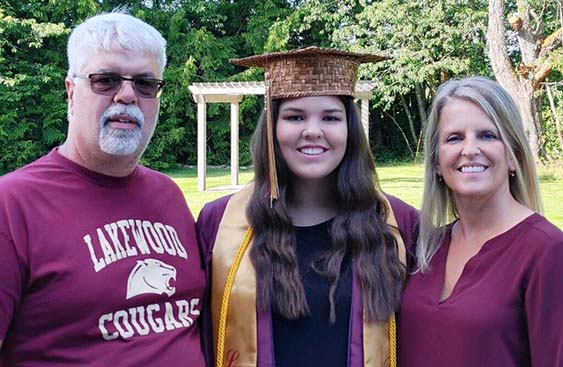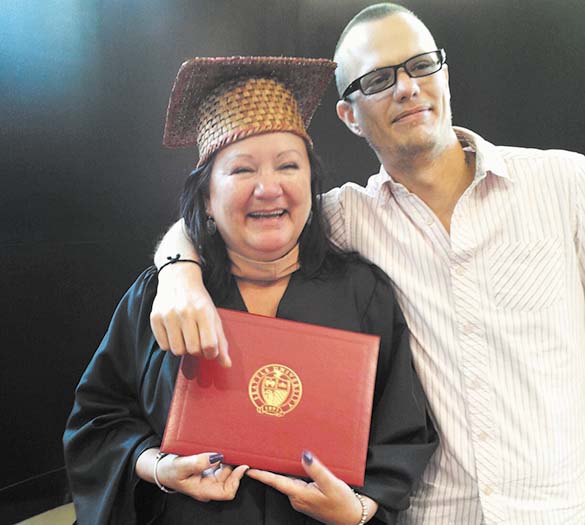
By Shaelyn Hood, Tulalip News
Many tribal members hear elders and community leaders speak of the importance of earning your degree and receiving a form of higher education. It is important to learn the significance behind this advice, the values of earning your degree, and the steps to getting there.
One key advantage to receiving your higher education, is an increased access to job opportunities. College graduates will typically see 57% more job opportunities that non-graduates in their area. It also opens the gate for more specialized careers. Higher education offers a substantial platform for someone to build their expertise. Those seeking additional education while continue to work can gain necessary training, and the opportunity for promotions within their field.
Another more sought-after reason as to why people earn their degrees, is the potential to earn a higher income. According to the Bureau of Labor Statistics, on average, someone who earns their bachelor’s degree will earn $17,500 more a year than someone with an associate degree, and $25,000 more than a high school graduate.
Additionally, being able to give back to your community. As we know, there are positions that do not require a degree, however, there are very specialized positions that our tribe occasionally needs and are at risk of needing in the future. As we often hear from our elders, and community leaders, they are looking for tribal members to eventually replace them in their positions.
Chelsea Orr felt that same passion to give back. She is currently a senior at Washington State University and earned both her high school degree and associates degree in June this year. Her passion for Human Development began at the tribe, and she decided that she would eventually use her skills to help her people.
“I was doing Summer Youth at Tulalip Early Learning Academy, and a lot of kids there needed a little bit of extra help,” said Chelsea. “Eventually, I wanted to be the kind of person to help them.”
Once graduating with a 3.95 GPA from Lakewood High School, Orr found out that she had also won Tulalip Senior Girl of the Year. She spoke about her heritage and how it has helped her academically, “I feel like it’s made me more strong-willed and has helped me persevere. Knowing that our people have been through so much, I want to be able to come back and work for the tribe to help our people. We need to stay together”.
Unfortunately, a trend that some universities are seeing, is an overall attendance decrease from Native youth. According to the Postsecondary National Policy Institute, currently only 16% of Native Americans attain a bachelor’s degree or higher, and only 9% attain an associate’s degree. Other studies show that undergraduate enrollment among Native Americans, ages 18-24, have gradually decreased since 2016-2017. But as this is continuing, there is hope in knowing that non-traditional students’ attendance is growing.

Non-traditional students are those who did not seek higher education right out of high school. Lena Hammons, tribal elder, was such a student for many years. At the time, she had a family and children to focus on and decided that she would pursue a higher education later in life. Since then, she has earned her associates, bachelor’s, master’s, and doctoral degree.
Hammons said, “I tell everybody, I didn’t get my degree to become better than anybody else. I got it to become a better me, so that I could be a better mom, grandma, community member, tribal member, employee, to gain better insight to behaviors, and how the various federal laws impacted our behaviors”. She talked about how it’s not everyone’s path to start right out of high school, “it’s about knowing when it’s the right time and place. Don’t stress because you’re not ready. Detours aren’t necessarily a bad thing”.
Many non-traditional students worry about the balance of schoolwork and life’s responsibilities, “I tell the students all the time, I never missed family time to do homework. I take my homework with me. If I could go to a family event and read a chapter, then that is what I did. Balancing family life and schoolwork is very important,” Hammons said.
Currently, the Tulalip Tribes Higher Education Department has accounted for 362, 18+ year students enrolled throughout the 2020-2021 school year. Their goals to help these students are to increase enrollment, increase graduation rate, reach out to younger students, and offer support and guidance, and expand with internships with college students and graduates.
The Higher Education Department offers a variety of support to help tribal members seeking their degree. They currently offer a substantial amount of funding towards tuition, books/supplies, a stipend, and room/board and transportation allowance for those that qualify.
Outside of financial support, they recognize graduates or completion of certificates, train staff to assist students with their educational needs, assist with the Native American Career & Technical Education Program (NACTEP) and provide information and guidance to college planning.
For anyone that is interested in pursuing their academics further, please contact the Higher Education Department at: 360-716-4888 or highered@tulaliptribes-nsn.gov.